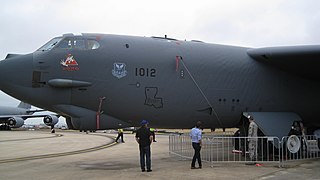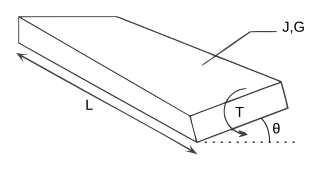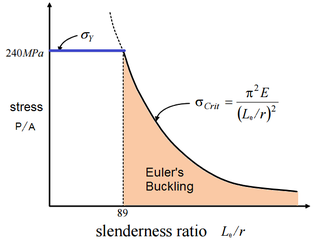| Material | Young's modulus (GPa) | Density (g/cm3) | Young's modulus per density; specific stiffness (106 m2s−2) | Young's modulus per density squared (103 m5kg−1s−2) | Young's modulus per density cubed (m8kg−2s−2) |
|---|
| Applewood or wild apple (Pyrus malus) | 8.76715 | 0.745 | 11.768 | 15.7959 | 21.2026 |
| Ash, black (Fraxinus nigra) | 11.0423 | 0.526 | 20.9929 | 39.9105 | 75.8755 |
| Ash, blue (quadrangulata) | 9.64974 | 0.603 | 16.0029 | 26.5388 | 44.0113 |
| Ash, green (Fraxinus pennsylvanica lanceolata) | 11.4738 | 0.610 | 18.8095 | 30.8352 | 50.5495 |
| Ash, white (Fraxinus americana) | 12.2485 | 0.638 | 19.1983 | 30.0914 | 47.1651 |
| Aspen (Populus tremuloides) | 8.21797 | 0.401 | 20.4937 | 51.1065 | 127.448 |
| Aspen, large tooth (Populus grandidentata) | 9.76742 | 0.412 | 23.7073 | 57.5421 | 139.665 |
| Basswood (Tilia glabra or Tilia americanus) | 10.091 | 0.398 | 25.3544 | 63.7045 | 160.061 |
| Beech (Fagus grandifolia or Fagus americana) | 11.5718 | 0.655 | 17.6669 | 26.9724 | 41.1793 |
| Beech, blue (Carpinus caroliniana) | 7.3746 | 0.717 | 10.2854 | 14.345 | 20.007 |
| Birch, gray (Betula populifolia) | 7.8159 | 0.552 | 14.1592 | 25.6508 | 46.4688 |
| Birch, paper (Betula papyrifera) | 10.9736 | 0.600 | 18.2894 | 30.4823 | 50.8039 |
| Birch, sweet (Betula lenta) | 14.9061 | 0.714 | 20.8769 | 29.2394 | 40.9515 |
| Buckeye, yellow (Aesculus octandra) | 8.12971 | 0.383 | 21.2264 | 55.4214 | 144.703 |
| Butternut (Juglans cinerea) | 8.13952 | 0.404 | 20.1473 | 49.8696 | 123.44 |
| Cedar, eastern red (Juniperus virginiana) | 6.00167 | 0.492 | 12.1985 | 24.7937 | 50.3938 |
| Cedar, northern white (Thuja occidentalis) | 5.57018 | 0.315 | 17.6831 | 56.1368 | 178.212 |
| Cedar, southern white (Chamaecyparis thvoides) | 6.42336 | 0.352 | 18.2482 | 51.8414 | 147.277 |
| Cedar, western red (Thuja plicata) | 8.03165 | 0.344 | 23.3478 | 67.8715 | 197.301 |
| Cherry, black (Prunus serotina) | 10.2578 | 0.534 | 19.2093 | 35.9724 | 67.3641 |
| Cherry, wild red (Prunus pennsylvanica) | 8.74753 | 0.425 | 20.5824 | 48.4292 | 113.951 |
| Chestnut (Castanea dentata) | 8.53179 | 0.454 | 18.7925 | 41.3931 | 91.1743 |
| Cottonwood, eastern (Populus deltoides) | 9.53206 | 0.433 | 22.014 | 50.8407 | 117.415 |
| Cypress, southern (Taxodium distichum) | 9.90472 | 0.482 | 20.5492 | 42.6332 | 88.4506 |
| Dogwood (flowering) (Cornus Florida) | 10.6402 | 0.796 | 13.3671 | 16.7928 | 21.0965 |
| Douglas fir (coast type) (Pseudotsuga taxifolia) | 13.3076 | 0.512 | 25.9915 | 50.7646 | 99.1495 |
| Douglas fir (mountain type) (Pseudotsuga taxifolia) | 9.62032 | 0.446 | 21.5702 | 48.3637 | 108.439 |
| Ebony, Andaman marble-wood (India) (Diospyros kursii) | 12.4544 | 0.978 | 12.7346 | 13.0211 | 13.314 |
| Ebony, Ebè marbre (Mauritius, E. Africa) (Diospyros melanida) | 9.8753 | 0.768 | 12.8585 | 16.7428 | 21.8005 |
| Elm, American (Ulmus americana) | 9.2967 | 0.554 | 16.7811 | 30.2907 | 54.6764 |
| Elm, rock (Ulmus racemosa or Ulmus thomasi) | 10.65 | 0.658 | 16.1854 | 24.5979 | 37.3829 |
| Elm, slippery (Ulmus fulva or pubescens) | 10.297 | 0.568 | 18.1285 | 31.9164 | 56.1908 |
| Eucalyptus, Karri (W. Australia) (Eucalyptus diversicolor) | 18.4855 | 0.829 | 22.2986 | 26.8982 | 32.4465 |
| Eucalyptus, Mahogany (New South Wales) (Eucalyptus hemilampra) | 15.7691 | 1.058 | 14.9046 | 14.0875 | 13.3153 |
| Eucalyptus, West Australian mahogany (Eucalyptus marginata) | 14.3373 | 0.787 | 18.2177 | 23.1483 | 29.4133 |
| Fir, balsam (Abies balsamea) | 8.62005 | 0.414 | 20.8214 | 50.2932 | 121.481 |
| Fir, silver (Abies amabilis) | 10.552 | 0.415 | 25.4264 | 61.2684 | 147.635 |
| Gum, black (Nyssa sylvatica) | 8.22778 | 0.552 | 14.9054 | 27.0025 | 48.9176 |
| Gum, blue (Eucalyptus globulus) | 16.5046 | 0.796 | 20.7344 | 26.0483 | 32.7239 |
| Gum, red (Liquidambar styraciflua) | 10.2479 | 0.530 | 19.3358 | 36.4826 | 68.835 |
| Gum, tupelo (Nyssa aquatica) | 8.71811 | 0.524 | 16.6376 | 31.7512 | 60.5939 |
| Hemlock eastern (Tsuga canadensis) | 8.29643 | 0.431 | 19.2492 | 44.6618 | 103.624 |
| Hemlock, mountain (Tsuga martensiana) | 7.8159 | 0.480 | 16.2831 | 33.9232 | 70.6733 |
| Hemlock, western (Tsuga heterophylla) | 9.95375 | 0.432 | 23.0411 | 53.3359 | 123.463 |
| Hickory, bigleaf shagbark (Hicoria laciniosa) | 13.0919 | 0.809 | 16.1828 | 20.0034 | 24.7261 |
| Hickory, mockernut (Hicoria alba) | 15.3964 | 0.820 | 18.7761 | 22.8977 | 27.9241 |
| Hickory, pignut (Hicoria glabra) | 15.7201 | 0.820 | 19.1708 | 23.379 | 28.511 |
| Hickory, shagbark (Hicoria ovata) | 14.9551 | 0.836 | 17.8889 | 21.3982 | 25.596 |
| Hornbeam (Ostrya virginiana) | 11.7582 | 0.762 | 15.4307 | 20.2502 | 26.5751 |
| Ironwood, black (Rhamnidium ferreum) | 20.594 | 1.077−1.30 | 17.48±1.64 | 14.97±2.78 | 12.93±3.56 |
| Larch, western (Larix occidentalis) | 11.6503 | 0.587 | 19.8472 | 33.8112 | 57.6 |
| Locust, black or yellow (Robinia pseudacacia) | 14.2 | 0.708 | 20.0565 | 28.3284 | 40.0119 |
| Locust honey (Gleditsia triacanthos) | 11.4247 | 0.666 | 17.1543 | 25.7572 | 38.6744 |
| Magnolia, cucumber (Magnolia acuminata) | 12.5133 | 0.516 | 24.2506 | 46.9972 | 91.0798 |
| Mahogany (W. Africa) (Khaya ivorensis) | 10.5814 | 0.668 | 15.8404 | 23.7131 | 35.4987 |
| Mahogany (E. India) (Swietenia macrophylla) | 8.01203 | 0.54 | 14.8371 | 27.4761 | 50.8817 |
| Mahogany (E. India) (Swietenia mahogani) | 8.72792 | 0.54 | 16.1628 | 29.9311 | 55.428 |
| Maple, black (Acer nigrum) | 11.1894 | 0.620 | 18.0474 | 29.1087 | 46.9495 |
| Maple, red (Acer rubrum) | 11.3267 | 0.546 | 20.7448 | 37.9942 | 69.5865 |
| Maple, silver (Acer saccharinum) | 7.89435 | 0.506 | 15.6015 | 30.833 | 60.9347 |
| Maple, sugar (Acer saccharum) | 12.6506 | 0.676 | 18.7139 | 27.6832 | 40.9515 |
| Oak, black (Quercus velutina) | 11.3071 | 0.669 | 16.9014 | 25.2637 | 37.7634 |
| Oak, bur (Quercus macrocarpa) | 7.09021 | 0.671 | 10.5666 | 15.7476 | 23.4688 |
| Oak, canyon live (Quercus chrysolepis) | 11.2678 | 0.838 | 13.4461 | 16.0455 | 19.1473 |
| Oak, laurel (Quercus Montana) | 10.9246 | 0.674 | 16.2086 | 24.0484 | 35.6801 |
| Oak, live (Quercus virginiana) | 13.543 | 0.977 | 13.8618 | 14.1881 | 14.5221 |
| Oak, post (Quercus stellata or Quercus minor) | 10.4245 | 0.738 | 14.1253 | 19.14 | 25.9349 |
| Oak, red (Quercus borealis) | 12.4937 | 0.657 | 19.0162 | 28.9441 | 44.0549 |
| Oak, swamp chestnut (Quercus Montana (Quercus prinus)) | 12.2289 | 0.756 | 16.1758 | 21.3965 | 28.3023 |
| Oak swamp white (Quercus bicolor or Quercus platanoides) | 14.1804 | 0.792 | 17.9046 | 22.6068 | 28.5439 |
| Oak, white (Quercus alba) | 12.2681 | 0.710 | 17.279 | 24.3367 | 34.277 |
| Paulownia (P. tomentosa) | 6.894 | 0.274 | 25.1606 | 91.8269 | 335.134 |
| Persimmon (Diospyros virginiana) | 14.151 | 0.776 | 18.2358 | 23.4998 | 30.2832 |
| Pine, eastern white (Pinus strobus) | 8.80637 | 0.373 | 23.6096 | 63.2964 | 169.696 |
| Pine, jack (Pinus banksiana or Pinus divericata) | 8.51217 | 0.461 | 18.4646 | 40.0533 | 86.8836 |
| Pine, loblolly (Pinus taeda) | 13.2782 | 0.593 | 22.3916 | 37.7598 | 63.6759 |
| Pine, longleaf (Pinus palustris) | 14.1706 | 0.638 | 22.211 | 34.8135 | 54.5665 |
| Pine, pitch (Pinus rigida) | 9.46342 | 0.542 | 17.4602 | 32.2144 | 59.4361 |
| Pine, red (Pinus resinosa) | 12.3956 | 0.507 | 24.4489 | 48.2227 | 95.1139 |
| Pine, shortleaf (Pinus echinata) | 13.1899 | 0.584 | 22.5855 | 38.6738 | 66.2223 |
| Poplar, balsam (Populus balsamifera or Populus candicans) | 7.02156 | 0.331 | 21.2132 | 64.0881 | 193.62 |
| Poplar, yellow (Liriodendron tulipifera) | 10.3754 | 0.427 | 24.2984 | 56.905 | 133.267 |
| Redwood (Sequoia sempervirens) | 9.39477 | 0.436 | 21.5476 | 49.4212 | 113.351 |
| Sassafras (Sassafras uariafolium) | 7.74725 | 0.473 | 16.379 | 34.6278 | 73.209 |
| Satinwood (Ceylon) (Chloroxylon swietenia) | 10.7971 | 1.031 | 10.4725 | 10.1576 | 9.85217 |
| Sourwood (Oxydendrum arboreum) | 10.6206 | 0.593 | 17.91 | 30.2023 | 50.9313 |
| Spruce, black (Picea mariana) | 10.4833 | 0.428 | 24.4937 | 57.2283 | 133.711 |
| Spruce, red (Picea rubra or Picea rubens) | 10.5029 | 0.413 | 25.4308 | 61.5758 | 149.094 |
| Spruce, white (Picea glauca) | 9.81646 | 0.431 | 22.776 | 52.8446 | 122.609 |
| Sycamore (Platanus occidentalis) | 9.82626 | 0.539 | 18.2305 | 33.8229 | 62.7512 |
| Tamarack (Larix laricina or Larix americana) | 11.3169 | 0.558 | 20.2811 | 36.3461 | 65.1364 |
| Teak (India) (Tectona grandis) | 11.7189 | 0.5892 | 19.8896 | 33.7569 | 57.2928 |
| Walnut, black (Juglans nigra) | 11.6209 | 0.562 | 20.6777 | 36.7931 | 65.4682 |
| Willow, black (Salix nigra) | 5.03081 | 0.408 | 12.3304 | 30.2216 | 74.0726 |














